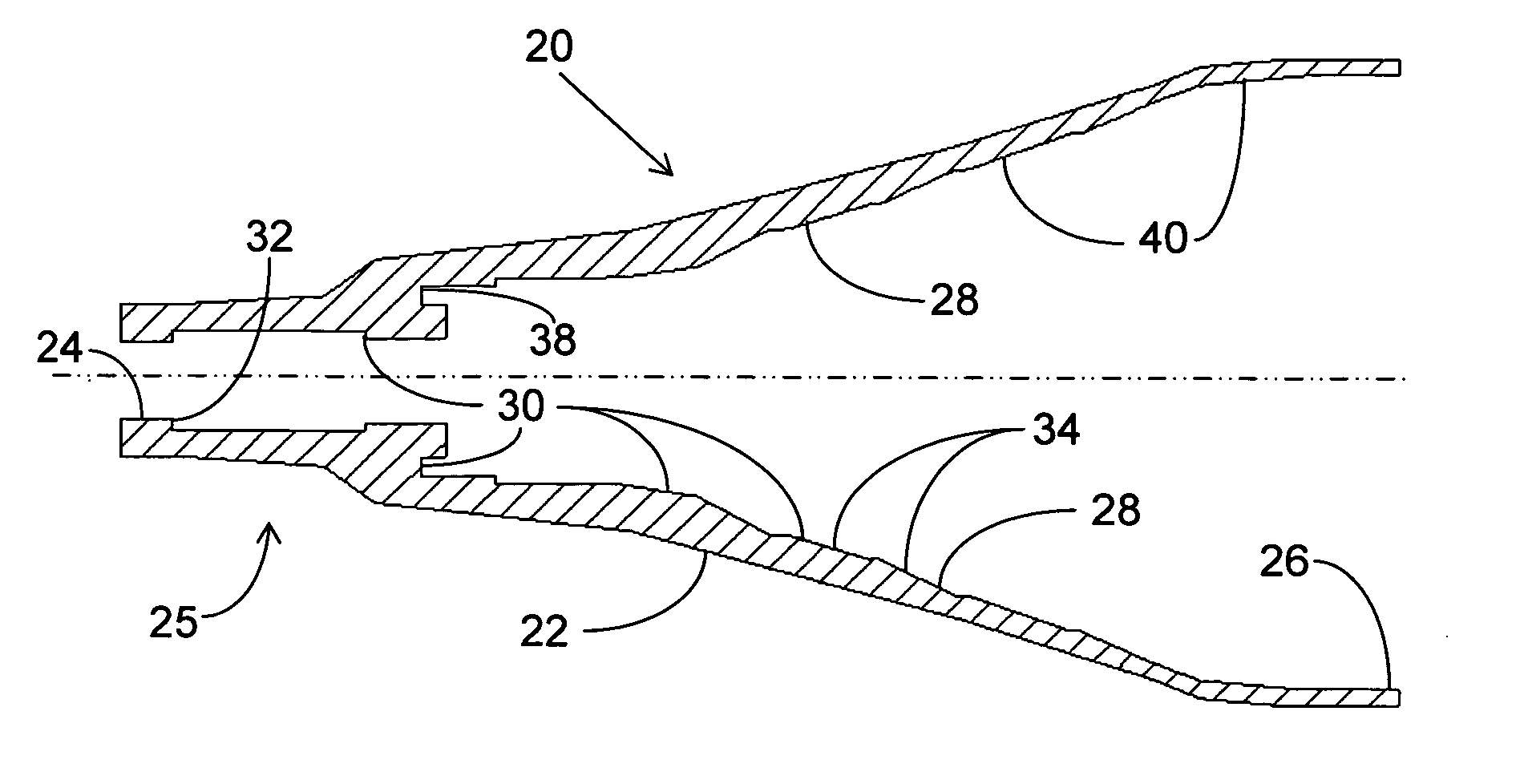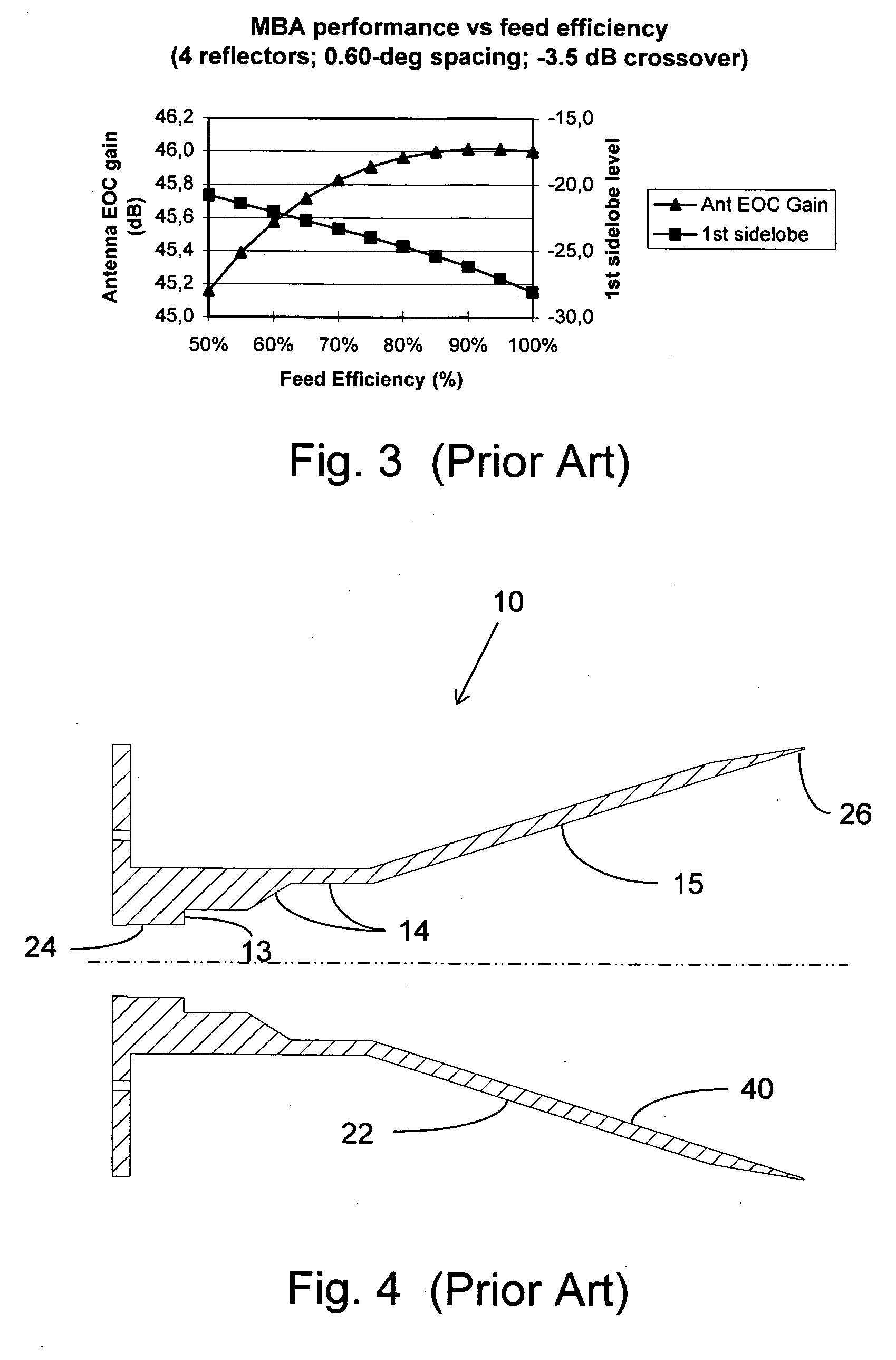High performance multimode horn for communications and tracking
a multi-mode, high-performance technology, applied in the field of horns, can solve the problems of degrading gain performance, affecting the performance of such antennas, and the host of challenging antenna design problems, and achieve the effect of optimal gain and efficient propagation
- Summary
- Abstract
- Description
- Claims
- Application Information
AI Technical Summary
Benefits of technology
Problems solved by technology
Method used
Image
Examples
Embodiment Construction
[0052] With reference to the annexed drawings the preferred embodiments of the present invention will be herein described for indicative purpose and by no means as of limitation.
High Performance Multimode Horn for Communications and Tracking
[0053] In order to overcome the performance limitations obtained with conventional feed elements, we have developed a high performance multimode horn that generates an optimal mode mix for the communications signals and propagates tracking mode signals, which can be used to accurately track a ground beacon and thus greatly reduce the performance degradations caused by pointing error. These high performance multimode horns can be used in single-aperture multibeam antennas or combined with multiple aperture antennas to further improve their RF (Radio Frequency) performance. This feed element can achieve higher aperture efficiency than conventional dual-mode or hybrid multimode solutions, while maintaining good pattern symmetry and cross-polar pe...
PUM
 Login to View More
Login to View More Abstract
Description
Claims
Application Information
 Login to View More
Login to View More - R&D
- Intellectual Property
- Life Sciences
- Materials
- Tech Scout
- Unparalleled Data Quality
- Higher Quality Content
- 60% Fewer Hallucinations
Browse by: Latest US Patents, China's latest patents, Technical Efficacy Thesaurus, Application Domain, Technology Topic, Popular Technical Reports.
© 2025 PatSnap. All rights reserved.Legal|Privacy policy|Modern Slavery Act Transparency Statement|Sitemap|About US| Contact US: help@patsnap.com



